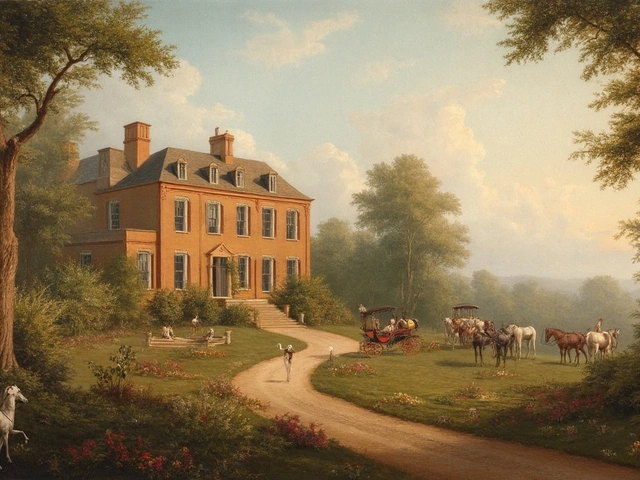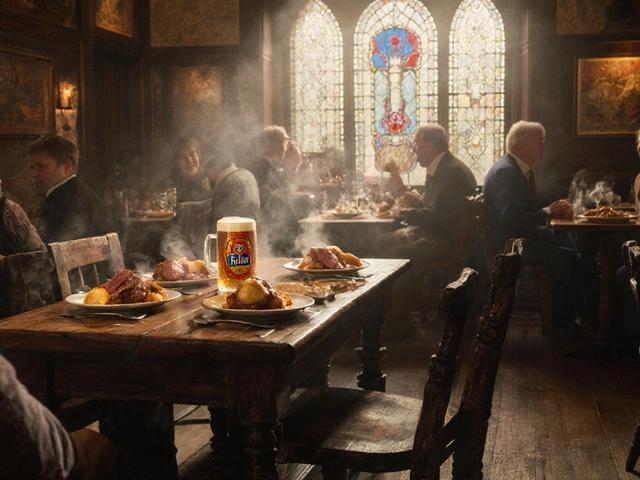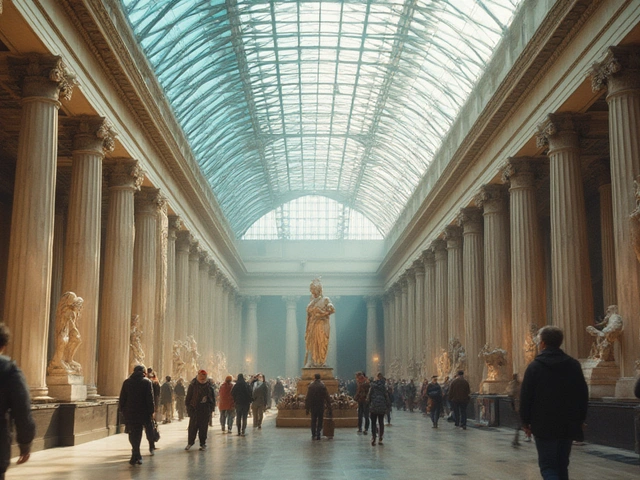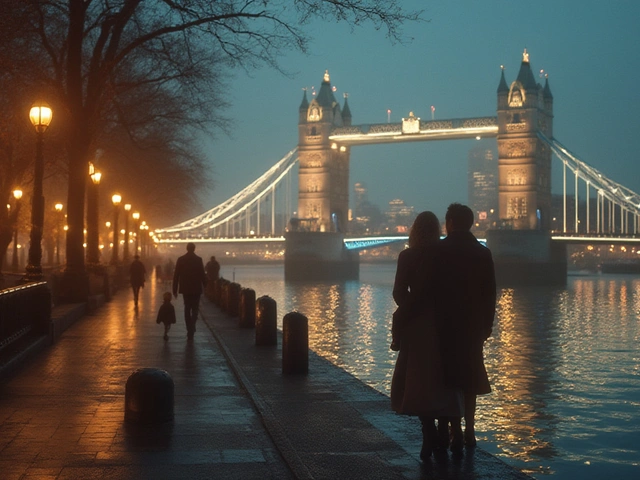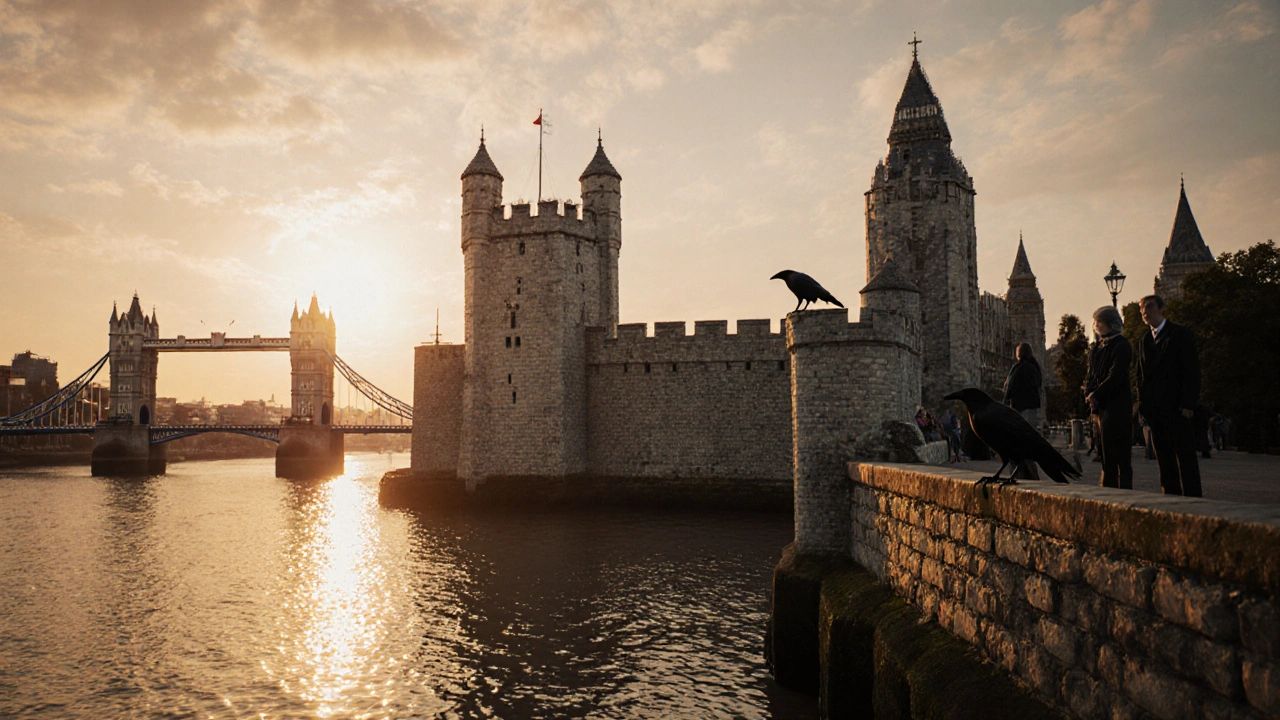
In London, few places carry the weight of history like the Tower of London. Standing where the Romans first built a fort over 2,000 years ago, this fortress has been a royal palace, a prison, an armory, and now one of the city’s most visited attractions. If you’ve walked along the Thames near Tower Bridge, passed the red brick walls of the White Tower, or heard the deep chime of Big Ben echoing across the city, you’ve felt the pulse of London’s past-and the Tower is at its heart.
More Than Just a Tourist Spot
The Tower of London isn’t just a postcard image with a moat. It’s a living archive of power, betrayal, and survival. Built by William the Conqueror in 1078, the White Tower was the tallest structure in medieval London. For centuries, kings and queens used it as both a home and a prison. Henry VIII kept Anne Boleyn locked here before her execution. Elizabeth I was held captive under suspicion of treason. Even the Princes in the Tower-Edward V and his brother-vanished within these walls, their fate still debated today.
Unlike other historic sites that feel distant, the Tower feels immediate. You can stand where a condemned prisoner took their last breath, trace the footsteps of kings who walked these same stones, and see the very crowns worn by monarchs who ruled over an empire that stretched from India to the Caribbean. It’s not just history-it’s memory etched into stone and steel.
The Crown Jewels: A Symbol of Power
One of the most compelling reasons people come to the Tower is to see the Crown Jewels. Housed in the Jewel House, they’re guarded by armed personnel and motion sensors, but also by centuries of tradition. The Imperial State Crown, worn at every coronation since George VI, holds 2,868 diamonds, 273 pearls, 17 sapphires, 11 emeralds, and 5 rubies. The Sovereign’s Sceptre with Cross, topped by the 317-carat Cullinan I diamond, was once used to anoint kings and queens.
These aren’t just shiny objects-they’re political symbols. The sceptre represents royal authority; the orb, divine right. When you see them, you’re looking at objects that have been kissed by queens, carried in processions from Buckingham Palace to Westminster Abbey, and survived bombings during the Blitz. Even today, the Crown Jewels are still used in ceremonies. The next coronation will use them again.
The Beefeaters: Keepers of the Past
Walk through the Tower and you’ll see them-the Yeoman Warders, better known as Beefeaters. They’re not actors. They’re retired members of the British Armed Forces who’ve served at least 22 years. To become one, you need a medal for long service, a clean record, and the ability to tell a good story. They wear the same red and gold uniforms since the 16th century, and they still live on-site with their families.
These men and women don’t just give guided tours. They’re historians, custodians, and storytellers. Ask one about the ravens, and they’ll tell you how King Charles II ordered them protected after a fortune-teller warned that if the birds left, the kingdom would fall. Today, seven ravens live in the Tower, each with clipped wings and a keeper named after them. You’ll see them perched on the battlements, sometimes stealing tourists’ hats or squawking at lunchtime.
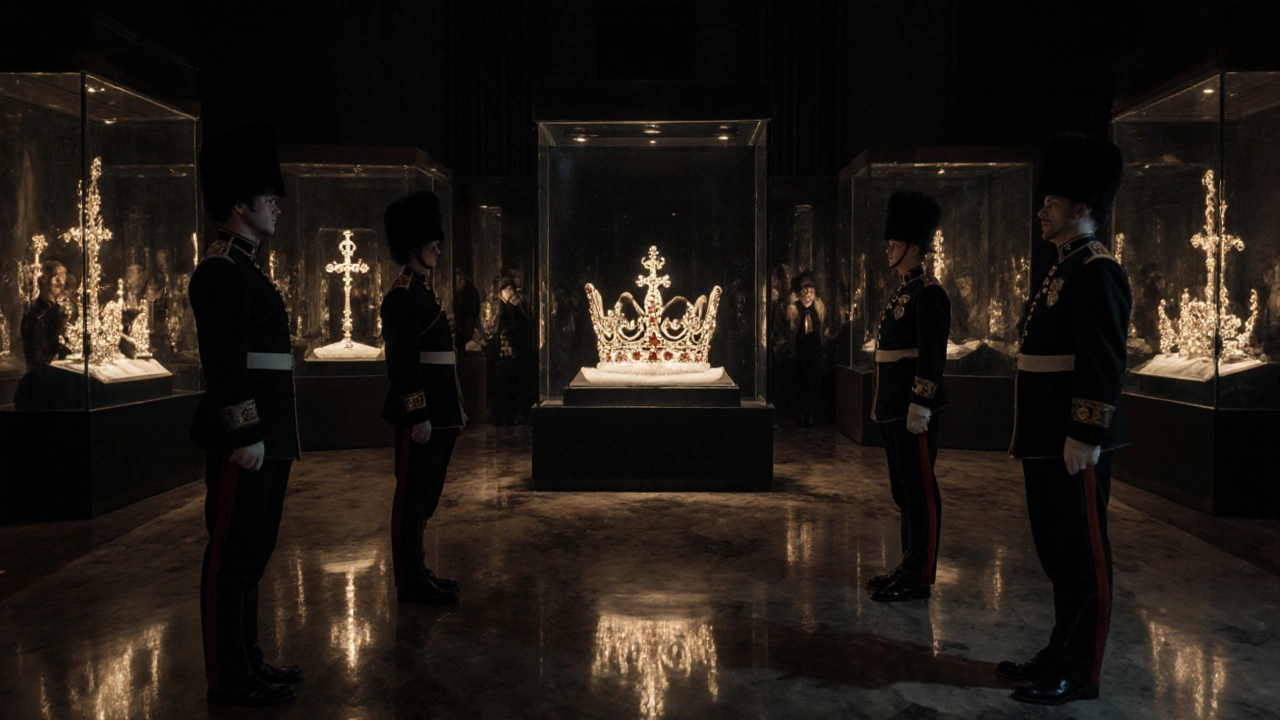
Where London’s Past Meets Its Present
The Tower sits right between two of London’s most iconic landmarks: Tower Bridge and London Bridge. Walk from the Tower to Tower Bridge in 10 minutes, and you’ll pass street vendors selling hot pies, tourists snapping photos, and locals rushing to the DLR station. You can grab a pie and mash from a nearby pub like The Anchor, just a five-minute walk away, and eat it on the grass by the river.
On weekends, the Tower hosts reenactments-sword drills, royal trials, even mock executions. It’s not cheesy. It’s well-researched. The staff use real 17th-century weapons and period-appropriate language. Locals come here with their kids, not just for the history, but because it’s one of the few places in central London where time still feels slow. You can sit by the moat, watch the swans glide past, and forget you’re in the middle of one of the world’s busiest cities.
Practical Tips for Londoners and Visitors
If you’re a Londoner, you might think you’ve seen it all. But here’s what most people miss:
- Visit on a weekday morning. The crowds thin out after 10 a.m., and you’ll have more space to explore the battlements and the Medieval Palace without jostling for photos.
- Use your Oyster card or contactless payment. Entry to the Tower is included in the London Pass, and many Tube stations nearby-Tower Hill, London Bridge, and Monument-are just a short walk away.
- Don’t skip the Royal Mint. It operated inside the Tower from 1279 until 1810. You can see original coin presses and learn how medieval money was made by hand.
- Bring a jacket. Even in summer, the wind off the Thames makes the battlements chilly. And in winter, it’s freezing.
- Check the official website for special events. In June, they hold the Ceremony of the Keys-a 700-year-old ritual where the Tower is locked for the night. It’s free, but you must book months ahead.
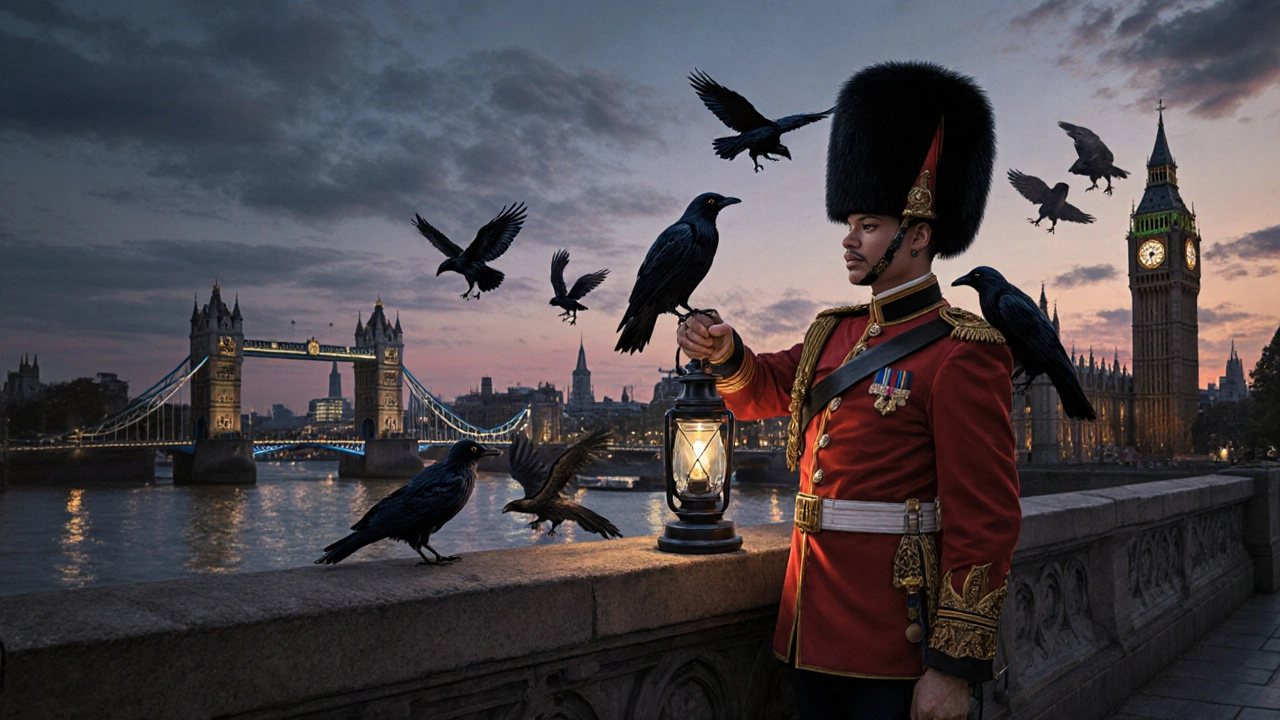
Why This Matters to London Today
The Tower of London isn’t just a relic. It’s a mirror. It reflects who we were, who we are, and who we’re still becoming. In a city that’s constantly changing-where new skyscrapers rise beside Georgian terraces and Indian restaurants sit next to traditional pie shops-the Tower stands firm. It reminds us that London didn’t become a global capital overnight. It was built through ambition, violence, innovation, and endurance.
When you walk through the Bloody Tower or stand where the executioner’s block once sat, you’re not just looking at history. You’re touching the roots of modern London. The same river that carried prisoners to their deaths now carries Thames Clippers full of commuters. The same stones that echoed with royal decrees now hear the chatter of school trips and tourists speaking a dozen languages.
It’s not just a landmark. It’s a story that still writes itself.
Is the Tower of London open every day?
Yes, the Tower of London is open daily from 9 a.m. to 5:30 p.m. (last entry at 4:30 p.m.), except on December 24, 25, 26, and January 1. It’s best to check the official website before visiting, as special events or maintenance can occasionally affect opening hours.
Can I see the Crown Jewels without buying a ticket?
No. Access to the Crown Jewels is only available with a paid ticket to the Tower of London. There is no public viewing area outside the Jewel House. However, you can see replicas in the Tower’s gift shop or online through the Royal Collection Trust’s digital archive.
Are the ravens really protected by law?
There’s no actual law, but tradition is enforced strictly. The ravens are cared for by the Ravenmaster, a Yeoman Warder assigned to their care. Their flight feathers are trimmed to prevent them from flying away. If a raven dies or leaves, the Queen’s permission is required to replace it. The current ravens are named Jubilee, Harris, Poppy, Odin, Gripp, Mabel, and Branwen.
How long should I spend at the Tower of London?
Most visitors spend 2 to 3 hours. If you’re interested in history, you could easily spend half a day. The Medieval Palace, the White Tower, the Chapel Royal, and the battlements all deserve time. The audio tour is 90 minutes long, but many people linger longer at the Crown Jewels or take photos on the river walls.
Is the Tower of London suitable for children?
Yes, and many London families bring their kids. The Tower has a family trail with interactive quizzes, a treasure hunt, and costume dressing-up areas. The Beefeaters’ stories-especially about the ravens and the princes-are gripping for all ages. Just be aware that some areas, like the execution sites, are sobering and may not suit very young children.
What’s the best way to get to the Tower of London?
The closest Tube stations are Tower Hill (Circle and District lines) and London Bridge (Jubilee and Northern lines). Both are about a 5-minute walk. If you’re coming from central London, the Thames Clippers riverbus stops at Tower Millennium Pier-great if you want a scenic route past the Houses of Parliament and the London Eye. Buses 15, 42, 78, and 100 also stop nearby.
Next Steps for Londoners
If you’ve never been inside the Tower, make this year the year you go. Take a lunch break. Bring a friend from out of town. Walk the battlements at sunset and watch the lights of Tower Bridge turn on. You don’t need to be a history buff to feel something here. The Tower doesn’t ask you to remember dates or names. It asks you to remember that this city, with all its chaos and charm, was built on courage, sacrifice, and stories that refused to be forgotten.
Comments (8)
- Joe Pittard
- November 1, 2025 AT 17:22 PM
The Tower of London isn’t just a monument-it’s a cathedral of power, a necropolis of ambition, and a stage where history didn’t just happen, it performed. Every stone has been kissed by tyranny, every moat has swallowed the screams of the condemned, and every crown jewel? A glittering lie sold to the masses as divine right. The Beefeaters? Retired soldiers who now play dress-up while the real horror is sanitized into family-friendly anecdotes. And don’t get me started on the ravens-seven birds, clipped wings, named like pets, while the monarchy still clings to superstition like a drowning man to driftwood. This isn’t heritage. It’s propaganda with a gift shop.
- Satya Im
- November 1, 2025 AT 18:38 PM
Indeed, the Tower stands as a profound ontological anchor-a tangible nexus between the temporal and the eternal. One cannot traverse its corridors without confronting the existential weight of sovereignty, mortality, and the performative nature of authority. The Crown Jewels, in their opulent excess, are not mere adornments; they are semiotic artifacts, encoding the mythos of divine legitimacy through gemstone and metal. The ravens? A metaphysical safeguard, perhaps, or merely a psychological crutch for a monarchy clinging to archaic symbolism. History, here, is not passive-it is curated, ritualized, and, above all, preserved as a monument to power’s enduring illusion.
- Laurence B. Rodrigue
- November 3, 2025 AT 15:20 PM
You’re all missing the real issue. The Tower’s been used as a propaganda tool since day one. The Crown Jewels? Probably mostly fake now. The real ones were swapped out during WWII, and no one’s ever seen the originals since. And those ‘Beefeaters’? Half of them are just actors hired by the Crown to keep tourists distracted while the real history gets buried under souvenir mugs and postcards. Don’t believe the official narrative. They’ve been rewriting this for centuries.
- Ramesh Narayanan
- November 4, 2025 AT 15:38 PM
Interesting piece. The Royal Mint section was particularly well-researched. I didn’t know coin presses operated inside the Tower until 1810. The craftsmanship on medieval pennies is astonishing-hand-struck, uneven edges, slight variations in weight. Makes you appreciate how much labor went into something so mundane back then. Also, the wind off the Thames is brutal in October. Bring a coat.
- Aditi Sonar
- November 6, 2025 AT 13:26 PM
THE RAVENS AREN’T REAL. 🐦👁️🗨️ THEY’RE Drones. The Queen uses them to spy on visitors. That’s why their wings are clipped-not to keep them in, but to stop them from flying back to the mothership. The Crown Jewels? They’re portals. I saw a guy in a red coat whispering to one of the ravens. It blinked in Morse code. 😱 #TowerConspiracy #RavenSurveillance #CrownJewelsAreAlienTech
- Benjamin Buzek
- November 8, 2025 AT 06:58 AM
Oh, please. You call that ‘history’? The Tower is a theme park for people who think ‘medieval’ means ‘dressed like a Renaissance faire reject.’ The Crown Jewels? A gaudy Walmart display of stolen loot from every colony Britain ever crushed. And the Beefeaters? They’re glorified tour guides paid to smile while the ghosts of Anne Boleyn and the Princes in the Tower silently scream from the walls. You call it ‘atmosphere’? I call it cultural gaslighting wrapped in velvet rope and overpriced tea. If you think this is ‘real’ history, you’ve never read a primary source. Or, worse-you’ve read one and still believe the official story.
- Vincent Barat
- November 9, 2025 AT 06:49 AM
Let me be clear: the Tower is the last bastion of Western civilization’s true legacy. The Crown Jewels? Symbols of divine order, not vanity. The Beefeaters? Men who’ve served their country-unlike the soft, woke tourists who snap selfies in front of the execution site. The ravens? Protected because Britain’s soul depends on them. If you don’t understand that, you don’t understand what it means to be part of a civilization that outlasted empires, revolutions, and ideologies that thought they could erase tradition. This isn’t a museum. It’s a warning. And if you’re not standing there with reverence, you’re part of the problem.
- Louie B-kid
- November 11, 2025 AT 06:43 AM
Love this breakdown-especially the Royal Mint detail! For folks who think history is just dates and dead kings, this is a masterclass in material culture. The coin presses? Pure engineering genius. And the wind off the Thames? Yeah, that’s real. I brought a hoodie last time and still shivered on the battlements. Pro tip: grab a pie from The Anchor, sit by the river, and just listen. You’ll hear the echo of 900 years of footsteps-and maybe, just maybe, feel something real.

